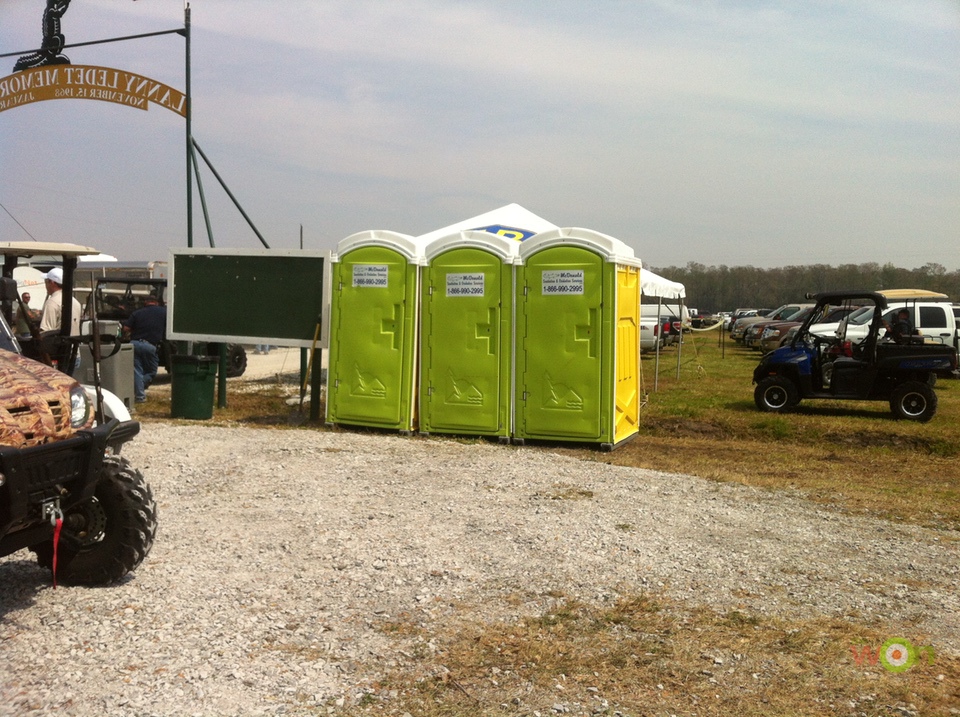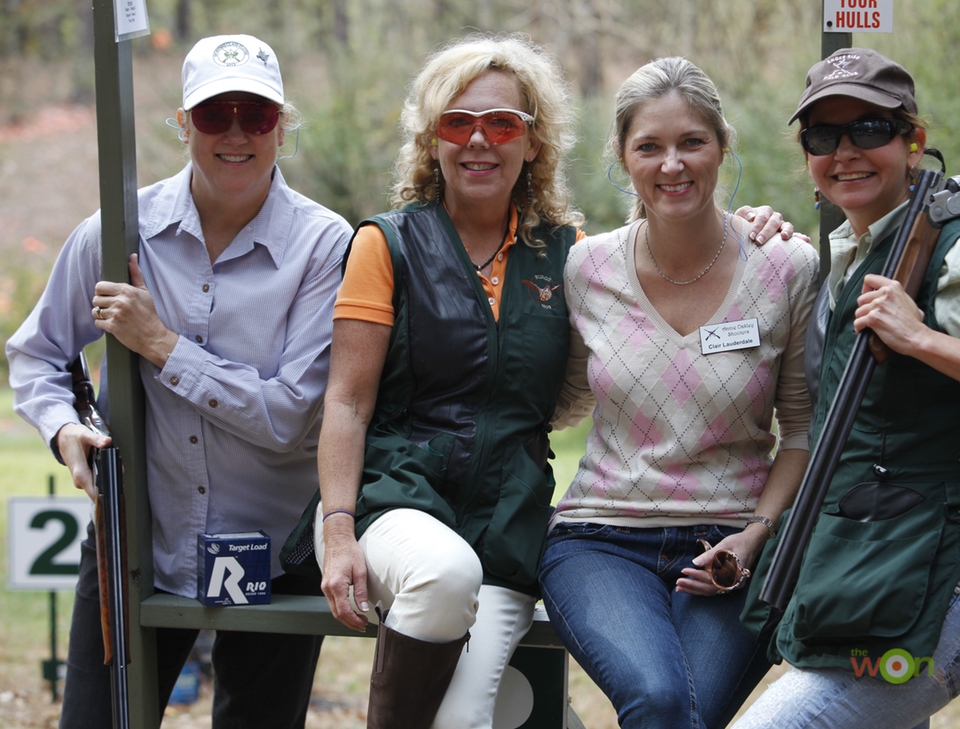For a lot of people, “going shooting” is a great social activity that can include beginners, intermediate and competitive shooters. Last Easter, while at the Hill County Resort in San Antonio, I took my family out to the National Shooting Complex to shoot sporting clays. We had a great time without any pressure of keeping score…although my older sister, Katherine, has a really hard time not being competitive with her younger sisters at everything!
Syren Savvy is sponsored by Syren
I highly recommend doing this on a regular basis to enjoy the company of your family and friends, and, more important, to introduce new shooters into the game—whether it be skeet, trap or sporting clays (I’m biased toward sporting clays). Anytime you can get people out and have them shooting and hitting targets—even if just a few—the chances of them doing it again go way up. Scorecards are optional, especially with beginners, although it’s nice to know how you did at the end. Local tournaments and charity events are also great for “going shooting,” since the targets are usually set for non-competitive shooters and can make for a good time and a worthy cause.
But if you’re serious about wanting to step up your game, then you need to approach your shooting like any athlete would their training. You need to emphasize nutrition, fitness, your mental game and, of course, practice.

You know your hydrated if you use these.
1. Nutrition and Hydration: In the words of Molly Ringwald in The Breakfast Club, “I have a really low tolerance for dehydration.” This is as important as anything with shooting, and it’s one of the hardest things to do right when at an event. Expect that there won’t be healthy food or snacks at the event and pack your own for the duration, or map out the location prior to arriving so you know where the local grocery stores are. Bring snacks with you on the course. If your stomach is growling, you won’t be focusing on the birds and your scores will suffer. Have plenty of water and fluids to replace electrolytes.
While I hate using them, you should be using the Porta Potty during your sporting clays round; if you’re not, then you’re not drinking enough fluids. It’s especially key for shooters who live in arid climates and come to shoots with high humidity.
2. Upper body strength: We aren’t running a marathon, but it’s important to have the strength and endurance to handle a full round of sporting clays without getting fatigued. So many of the women that I do demos with realize very quickly that they lack the upper body strength to hold the gun up for even a short amount of time. I recommend that they stand in their living room or bedroom, and with their gun, mount up to the corner of the ceiling and wall, move across the wall to the other corner, and then lower the gun to a low mount position. And then go back again, doing 25 to 50 reps per day. Not only will you be able to handle the gun better, but you’ll also get some nice-looking arms to go with it.
3. Mental training is as important as everything else, if not more important. Even if your body is a temple and you’re at your peak physical condition, it’s all for naught if you can’t focus and get distracted out on the course or the shoot-off platform. In games like trap and skeet, there is a rhythm to the shooting, and unless there is a broken target or trap machine, there is a pretty defined amount of time it takes to shoot one round. 5-Stand is the same way – they set the squads 20 minutes apart and it goes rather quickly. For those games, you need to stay focused for a pretty short amount of time with very few distractions.

Annie Monday – November 2012
For sporting clays, it’s very different. During a competition, a round of 100 targets could take up to three hours—even longer if there are issues with traps. There’s a lot of starting and stopping and socializing between stands. That said, being able to mentally get back into your “game mode” at each station can be the difference between a good round and a bad one. Work on creating a “pre-shot” routine so that you can get back into the groove each time. It should include everything from getting off the cart all the way to assessing your break point and hold point on the targets, to closing your gun and calling pull. You may need a slightly different plan if you are the first shooter on that station or if you have to wait.
Know also how you will handle a 1 or a 0 station. Having a plan to move forward to the next station without getting discouraged will help keep you focused and get you back on track for the rest of the round. Think about a few steps that help you calm down, focus on the targets, and find your break point and hold point, and come up with a plan.
4. Keeping your perspective: Everyone is shooting the same targets, and worrying about what everyone else is shooting won’t help you when you’re in the competition. I shot on a very hard course with a young man in Florida who was stressing out about all his misses. I reminded him that it’s all relative to what everyone else is doing. He ended up leading the juniors division and in the top 10 of the open class. When I saw him the next day, he thanked me for keeping him in check.

Dress for the weather.
5. Weather: While I would love to always be shooting on a 72-degree day with partly cloudy skies and 50 percent humidity, that’s just not always the case. Weather can shake the most seasoned of shooters and throw a wrench in a perfectly good score. Training for rain, wind, searing heat or freezing cold is as important as all the other preparations. Make a point to go out on those days at your local range if you can and try out different gear to see what works best…and what doesn’t. I always have lots of extra stuff with me; my favorite saying is “better to have it and not need it, than to need it and not have it,” especially when it comes to extra clothes, coats, gloves, shoes and especially rain gear.
John Imboden with ClayShooting USA magazine approached me at a shoot years ago and said, “I’ve seen four girls with your name on their jackets, and none of them are you!” Anyone who has traveled to San Antonio for the NSCA Nationals in October or the World English in April knows you can have all four seasons present in just one weekend.

You can’t shoot in a blanket.
6. Eyewear: Every once in a while when you’re training, change up your glasses, like you would have to do if you lost a contact and had to shoot in your regular eyeglasses, or if the frames broke on your shooting glasses and you needed to shoot in your regular sunglasses. Training will prepare you for the unexpected so that you can say to yourself, “I’ve shot in this situation before. Don’t freak out: I can handle it.”

Annie Monday – November 2012
7. Practice, Practice, Practice: When I take out new shooters for demos or lessons, I start them off with an easy trap shot or incomer so they can get immediate success. I tell them when they see those types of targets in the future, they will know how to hit them. My belief is that once you figure out a target, you add it to the database of presentations in your head, so that when you see it again, you’ll know what to do and can execute. For practice, it’s important to shoot those targets over and over until you hit them consistently. Start with hitting 5 in a row, then build up to 10 and 20 in a row.
Also, check out the multitude of books and videos by top shooters to help design a practice schedule that works for you and gets you to where you want to be in the sport. It’s different for each of us.
The bottom line is, prepare for what you can control…: yourself.
Lynne is on to her next adventure after over four years in Maryland with Caesar Guerini and Fabarm as the Brand Manager for Syren (a line of shotguns made for the ladies). She has attended dozens of demos and events and has been honored to get to meet and introduce hundreds of ladies and young girls (and lots of boys and men too) to all 3 brands and to shotgun shooting! Lynne has learned so much about shotguns – gun fit, eye dominance and mechanics – that shows her just how much more there is to learn. She now is doing marketing and branding consulting and also plans to stay active in the outdoor industry, do more hunting and sporting clays, shooting lessons and add some fly fishing to her repertoire. She’ll be based in the Dallas Fort Worth area. View all posts by Lynne Green